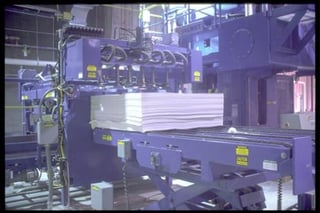
As a business, your investment in your equipment is a large part of your overall assets. Knowing how long that equipment will continue to operate is an important piece of information to help you plan your company's future expenditures. But the remaining useful life can be hard to determine. Fortunately, there's a way to get around the difficulty in determining this expected lifespan. Machine appraisers spend all day looking at and appraising equipment, so they not only have experience in how to calculate the estimated remaining lifespan but also know how to recognize signs that may extend or shorten machine lifespan. Here's a quick look at the overall process and what aspects may impact your equipment's estimated remaining life.
How does a machine appraiser determine remaining useful life?
Machines, like people, can age at different rates. Imagine a two-pack-a-day smoker with bad genetics who has done heavy construction and drinks a six pack every evening, before taking a ride down into some scary parts of town while never going to the doctor. If this individual made it past 50, it would be a miracle. The health guru with perfect genetics, a stress-free life and a love for fitness who regularly has health screenings may expect to live past the century mark at this point. Much like people who do or don't take care of themselves, machines can fail at different rates.
One area that can quickly impact machine lifespan is the environment in which it is used. Much like the smoker, a piece of equipment that is kept in a damp, dirty environment with extreme temperatures will tend to degrade much faster than one kept in a clean, dry environment with regulated temperatures. The bad genetics would represent the expected overall lifespan of a specific model of equipment, such as a model known for issues that will not last as long as similar models because of poor manufacturing, materials or mechanical problems. At the same time, the heavy construction background represents hard use of the machine. Equipment that has been used at the very top of its range of specifications, received hard use in a short period of time or otherwise abused will have a much shorter lifespan than may otherwise be expected.
When an equipment appraiser looks at a piece of machinery, there are a number of clues they can take into account. In addition to already knowing a rough range of estimated overall lifespan, the appraiser can look at the exterior for signs of abuse, including dents, bends or evidence of poorly-made repairs to determine any excessive use the equipment may have received. A look at internal components may reveal failing mechanisms that could cause a serious failure down the road. Checking out the environment may lead to details about whether a fresh coat of paint may stop corrosion or if the rust may cause a premature failure.
The process of estimating remaining useful life can be a daunting task, but with an equipment appraiser taking over the process, you'll quickly have the information you need for your business planning purposes. Be sure to check whether your equipment appraiser is certified, as the methodologies used by certified equipment appraisers have stood up to strong scrutiny in a wide range of situations. This means the remaining equipment lifespan they estimate for you is much more likely to be a good tool for your business planning needs.

